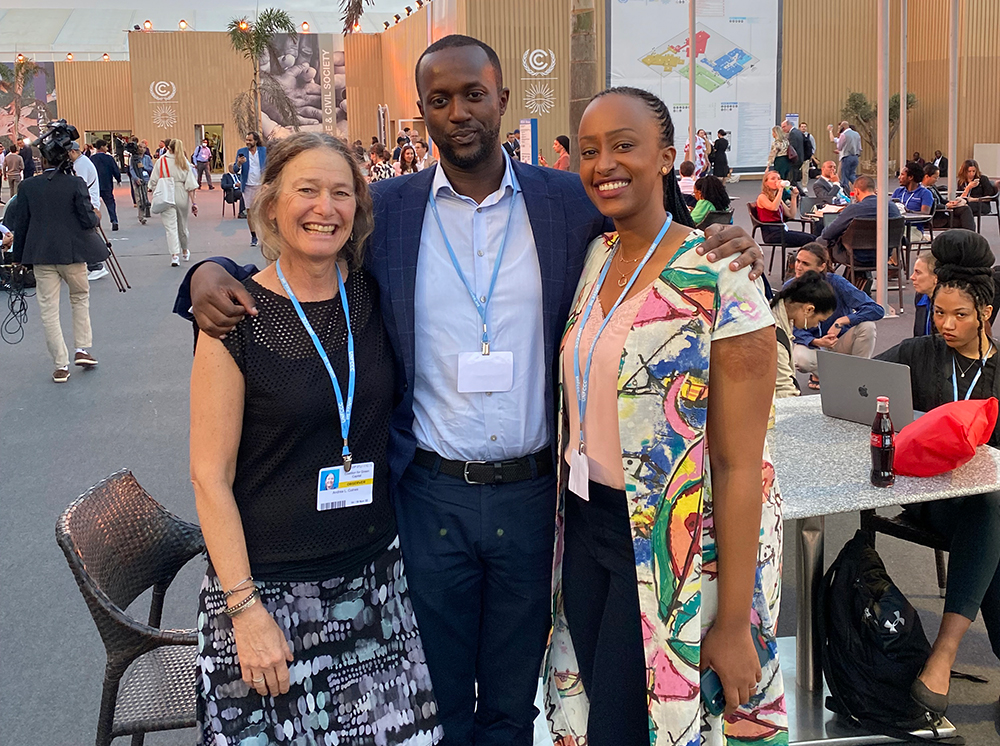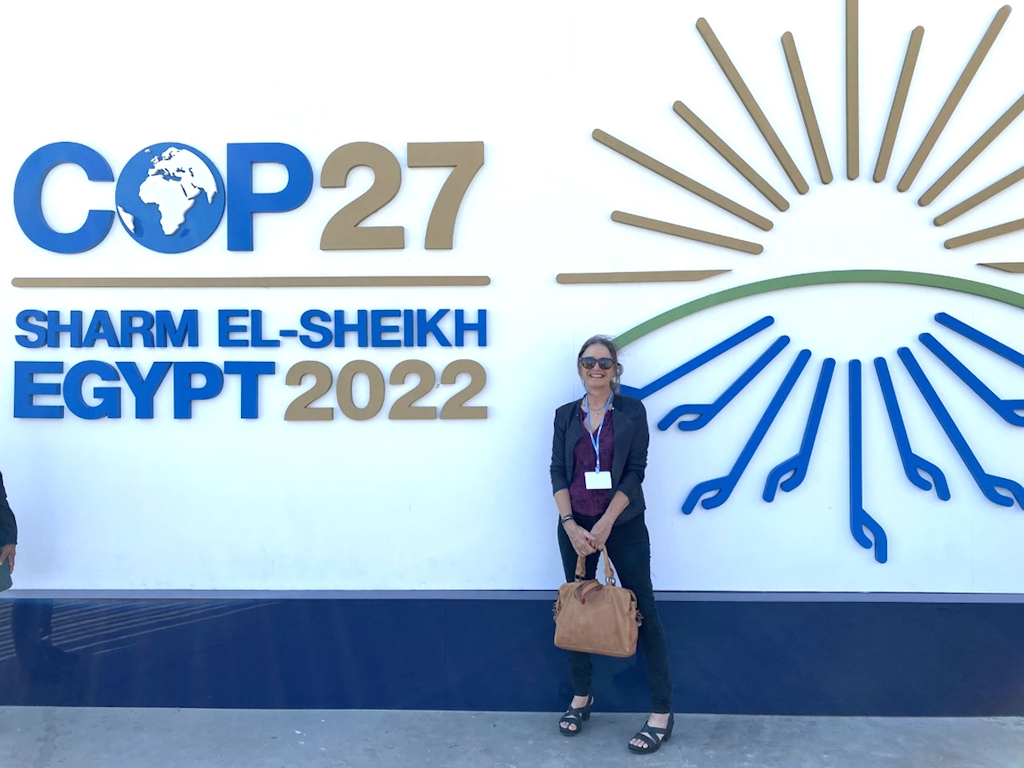New England Forestry Foundation (NEFF) Deputy Director and Climate Fellow Andi Colnes is live blogging from United Nations climate-change conference COP27 in Egypt from Nov. 14-17. Read about her third day below.

NEFF Deputy Director and Climate Fellow Andi Colnes (left) at COP27 with conservation finance colleagues from Rwanda
Writing by Andrea Colnes
Ok, it’s climate finance day for me at the COP—time to get a bit technical and look under the hood. I just attended a session on “Mobilizing Private Finance for Forest Restoration and Regenerative Business Models.” The geography was different—Africa—but the issues are the same as many we face in New England:
- Working with small landholders across diverse landscapes
- The need to define best practices and provide support for their adoption
- The need to support climate-oriented forestry initiatives that work for local business models
- The need to mobilize private investment into sustainable and climate-smart forestry
- The opportunity to grow sustainable wood products to feed into a dynamic bioeconomy
- The need to think and act on a landscape scale
When the landowner representative on the panel was asked what the main barrier is to shifting to climate-smart forestry and business models, his answer was quick and clear: “cost.” Forest landowners around the world face the same challenge as we do in New England: how can landowners afford to make the upfront investment in climate-smart forestry and then carry that cost over time?
The development partners on the panel—that means the folks with the money!—described their approach to this challenge as based in a ‘public-private partnership’ and ‘blended finance’ approach. What does this mean? It means starting with public funding to take on the earlier and riskier period of investment and then blending in private investment down the line.
For example, in New England, this might mean using public funding to support early commercial thinning and pre-commercial thinning on some of our large commercial ownerships (two elements of NEFF’s Acadian Exemplary Forestry standards). Then down the line, once profitable timber harvesting is in sight, blending in private investors to take the climate-smart forestry cycle to term.
Could NEFF’s Climate-Smart Commodities Partnership project work together with the new Greenhouse Gas (GHG) Reduction Fund created by the Inflation Reduction Act? The act allocated $27 billion to create the GHG Reduction Fund to incentivize climate mitigation. Could that money be used to provide low interest loans to New England landowners to implement climate-smart forestry, who could then pay the loan off when these practices yield higher-value forest products? NEFF’s Climate-Smart Commodities work will seek to develop these kinds of financing models that could potentially be replicated at scale across the region and country.
Simple, right? Obviously not, but here we are with sleeves rolled up and ready to dig in. Never doubt the inventiveness and determination of one small organization—and incredible regional partners—from New England, right?
Related Posts
New England Forestry Foundation Heads To COP27 | November 10
NEFF at COP27: Day 1 | November 14
NEFF at COP27: Day 2 | November 15
NEFF at COP27: Day 3 | November 16
NEFF at COP27: Day 4 | November 17
COP27 Wrapup—What Did We Learn? | November 22


